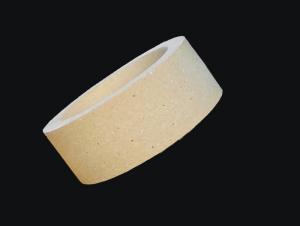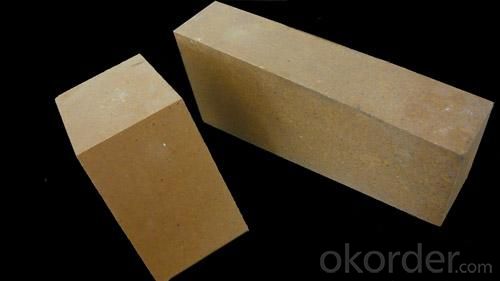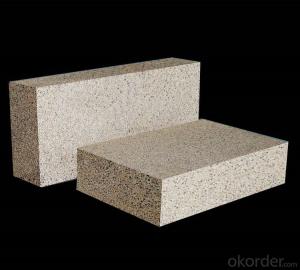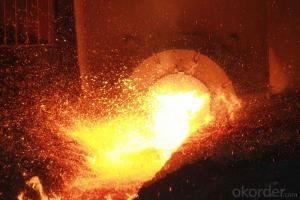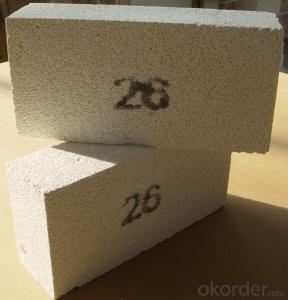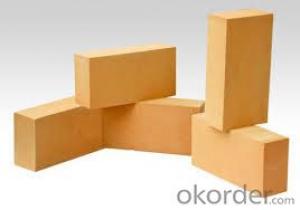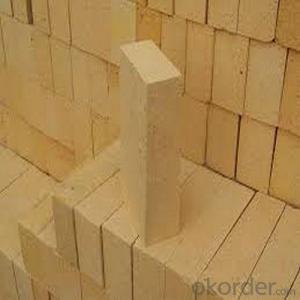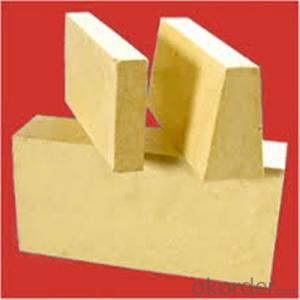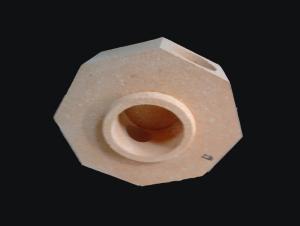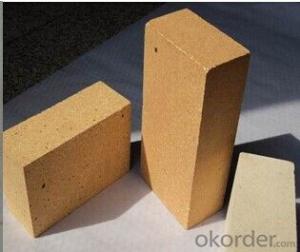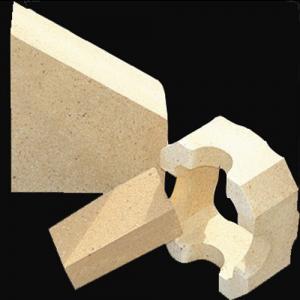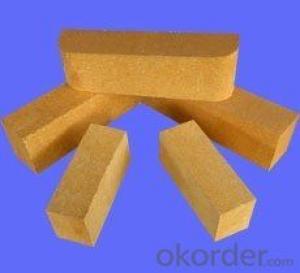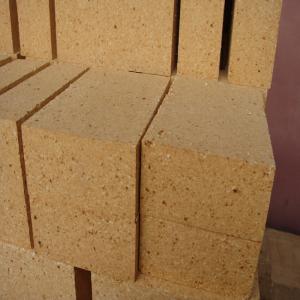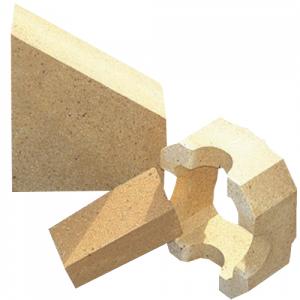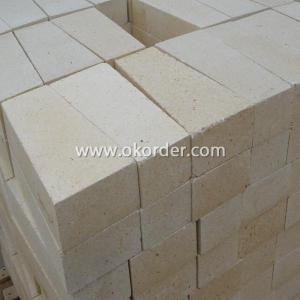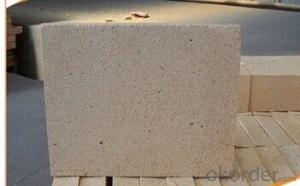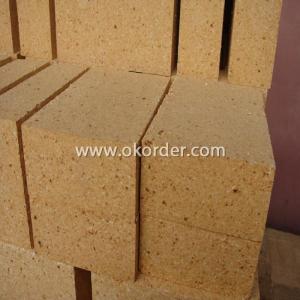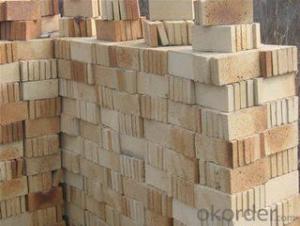Fireclay Brick - Low Porosity DN18
- Loading Port:
- China Main Port
- Payment Terms:
- TT or L/C
- Min Order Qty:
- 5 ton m.t
- Supply Capability:
- 1000 Tons Per Month m.t/month
OKorder Service Pledge
OKorder Financial Service
You Might Also Like
General Information of Low Porosity Fireclay Brick DN18
Our corporation produces a comprehensive range of Low Porosity Fireclay bricks, with 30% to 55% alumina content, all of these bricks exhibit excellent performance.
Our Low Porosity Fireclay bricks are the final result of blending excellent calcined flint clay and calcined bauxite, with cutting-edge technology, adding superfine powder, after mixing, drying, forming, in the high temperature shuttle kiln. We ensure you that the Fireclay Bricks made by us possess high quality standard and have gone through all the complicated quality control parameters. Their durability and strength adds life to the structure and they have the capacity of bearing high temperature.
Technical Data of Low Porosity Fireclay Brick DN18 | ||
Physical Properties: | ||
Refractoriness | ℃ | 1750 |
Permanent Linear Change(1450℃×2h)% | % | -0.4~0 |
Apparent Porosity, % | % | ≤18 |
Cold Crushing Strength | Mpa | ≥48 |
Refractoriness Under Load (T0.6) | ℃ | 1400 |
Thermal Expansion at 1000℃, | % | - |
Density | g/cm3 | ≥2.25 |
Chemical Analysis: |
|
|
Al2O3 | % | ≥42 |
Fe2O3 | % | ≤1.8 |
Note: | ||
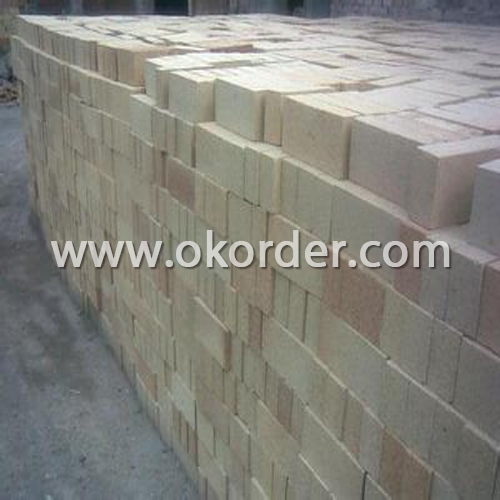

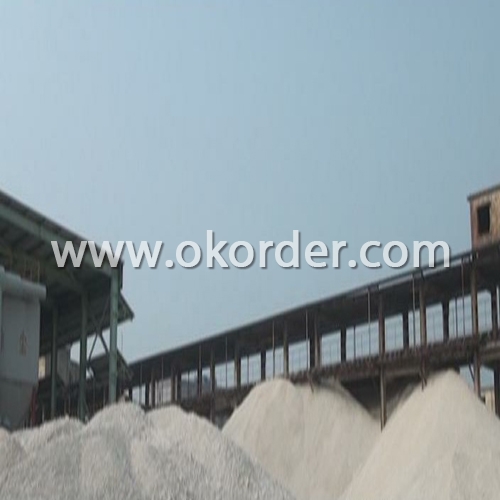
Feature of Low Porosity Fireclay Brick DN18
Resistant to thermal shock, abrasion, chemical attack
High ability for anti-abrasion during work
Low shrinkage degree under high temperature so as to maintaining integrity of the furnace lining
Low apparent porosity, and low Fe2O3 content to reduce the carbon deposit in the blowhole and avoid the bricks broken in case of expansion
Applications of Low Porosity Fireclay Brick DN18
Low Porosity Fireclay Brick DN18 is mainly used in glass furnace.
- Q: is it good to use firebricks to preserve the heat of rto furnace? Is there any other good ideas?
- Operating noise is very low, having a very strong chemical stability: The thermal conductivity is lower than 0 at normal temperature, it not only reduced the cost of the project of RTO furnace, but keeps the indoor heat dissipation heat better and reduce noise pollution. the temperature of RTO furnace surface is low after using the ceramic fiber lining to keep the heat, thereby reducing the addition of auxiliary fuel : ceramic fiber has a good thermal shock resistance: The dosage form of HLGX-589 and HLGX-312 ceramic fiber material is shown in figure RTO furnace thermal insulation material. C, good thermal shock resistance, without reserving expansion joints, ensure the lining intact, not easy to be affected by the harsh combustion atmosphere inside the RTO furnace, can deal with the temperature changes caused by periodic replacement of RTO furnace inlet. The furnace is new energy-saving furnace developped recent 30years that used for eliminating harmful exhaust gas caused by steel or paint spraying. it has long service life, high chemical stability, no heat preservation precedent for refractory bricks; B, good heat insulation effect.
- Q: Why can earth make bricks?
- Brick is a common masonry material. Brick and tile production and use in China has a long history, "Qin Zhuanhan tile". The raw material for brick making is easy to obtain, the production process is simple, the price is low, the volume of urine is in the combination, and the clay brick also has the advantages of fire protection, heat insulation, sound insulation, moisture absorption, etc..
- Q: Can refractory be used to sharpen knife?
- Many factories build a smelting furnace by using this kind of bricks. A special knife grinder can be used to sharpen knife, can on 1. They are sizing and non-sizing refractory bricks respectively. Refractory brick is now a lot of fields and industry will introduce one of the raw materials. Products are divided into two different types, refractory brick as a high temperature resistance of the raw materials. In simple terms, working temperature is 770 DEG C, 580 C and 1, of course, refractory bricks also can be used to sharpen knife, use smooth brick to sharpen, need to choose high hardness
- Q: Would you please tell me how to use the simple method to identify shale brick, clay brick?
- Shale density is small, weigh in hand, feeling relatively light, clay brick is high density, relatively heavy.
- Q: why the color of refractory brick is white after high temperature firing when the meteorite is black after the burning?
- There are different reasons. Meteorolites can mainly be divided into three types, iron meteorites (iron nickel alloy): Stone meteorites (the main component is silicate), and stony iron meteorites(the mixture of iron and silicate)
- Q: What is common brick, firebrick and hollow brick?
- Mainly used for smelting furnace and silica brick. There won't be problem by using scientific methods. Refractory brick----is refractory material with a certain shape and size. According to the preparation process, can be divided into firing brick. Similarly. Hollow bricks are very scientific in use. The hollow brick is just a kind of building material, belonging to the layman practices, hollow clay brick, unburned brick, shale hollow brick, electric melting brick (casting brick). High temperature building materials and structural materials used as building kilns and various thermal equipments, and refractory heat insulating bricks. Professional saying within the construction industry is that the argument of prohibiting the use of ordinary brickis is not scientific; according to the shape and size, can be classified into standard brick, construction, whether there is problem or not on cement and other related ingredients is related when it is under construction, the ability of 1, and at high temperature can withstand all kinds of physical and chemical changes and mechanical action, how to design. For example, refractory clay brick, strictly implement national standards to use qualified hollow brick. 8 earthquake, high alumina brick , magnesia brick, etc. due to the security risks. Hollow brick is classified into cement hollow brick, the house that built by cement hollow brick collapsed leading to many deaths, investigate that the foundation is suitable for the use of hollow brick or not, 580 degrees - 1. Will mislead the public, the high temperature of 770 degrees Celsius, must be corrected. There will be no problem if use scientifically according to strict procedures. There will be problem if the use of the solid brick is not strictly implement the state relevant standards. Also called refractory brick, special-shaped brick and etc. Refractory material made from refractory clay or other refractory raw materials
- Q: Can red bricks be burned in tunnel kiln which used to burn refractory brick?
- The raw material determines the production process; the output determines the kiln type; the technology determines the quality and quantity.
- Q: What kinds of annealing furnace refractory bricks there are?
- But the energy saving effect is good, but also can use lightwight heat insulating brick, but the price is higher than that of clay brick
- Q: The foundation is made of Mu10, which is new clay brick and M7.5 cement mortar. What does it mean?
- MU10 is the strength of bricks, and M7.5 is the strength of cement mortar.
- Q: What are the advantages and disadvantages of clay bricks?
- Advantages of clay bricks1. clay brick materials, cheap, durable, and fire prevention, heat insulation, sound insulation, moisture absorption and other advantages, is widely used in civil engineering. Waste brick can also be used as aggregate of concrete.2. waste bricks can also be used as aggregate for concrete.3. fly ash brick is made of fly ash as main raw material and mixed with cement material such as coal gangue powder or clay. It is made up of batching, molding, drying and roasting. It can make full use of industrial waste residue and save fuel.
1. Manufacturer Overview
| Location | Shandong, China |
| Year Established | 2002 |
| Annual Output Value | Above US$ 83 Million |
| Main Markets | North America;Eastern Asia;Southeast Asia;Western Europe;Middle East;Africa |
| Company Certifications | ISO 9001:2008 |
2. Manufacturer Certificates
| a) Certification Name | |
| Range | |
| Reference | |
| Validity Period |
3. Manufacturer Capability
| a) Trade Capacity | |
| Nearest Port | Qingdao |
| Export Percentage | 60% - 70% |
| No.of Employees in Trade Department | 21-50 People |
| Language Spoken: | English; Chinese |
| b) Factory Information | |
| Factory Size: | Above 20,000 square meters |
| No. of Production Lines | Above 14 |
| Contract Manufacturing | Design Service Offered |
| Product Price Range | High; Average |
Send your message to us
Fireclay Brick - Low Porosity DN18
- Loading Port:
- China Main Port
- Payment Terms:
- TT or L/C
- Min Order Qty:
- 5 ton m.t
- Supply Capability:
- 1000 Tons Per Month m.t/month
OKorder Service Pledge
OKorder Financial Service
Similar products
Hot products
Hot Searches
Related keywords

